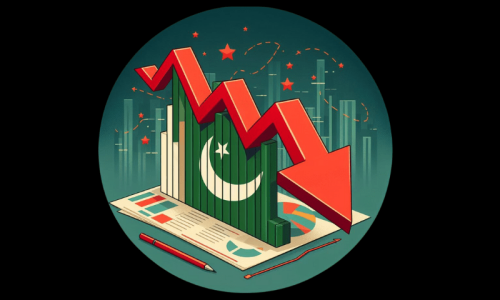In the absence of contemporary art museums, galleries are shouldering the responsibility of displaying heritage art. The current show in Karachi, ‘Significant Contributions’ that has been extracted from the substantial VM Gallery collection, comprises paintings by Ahmed Parvez, his friends Wahab Jaffar, Laila Shahzada and Lubna Agha. More than just a chromatic blast from the past the collection also prompts fresh studies of the artist who died at a relatively younger age, his art and immediate milieu of close friends.
While the current generation of contemporary artists is busy scaling new heights and seeking validation at prestigious international venues, the sentiment that our modernist masters need to be revaluated continues to simmer on the back burner. A purposeful revisit in order to frame new probes, reconsider established opinions and stir a ‘back to the future debate’ can enable us to understand where we came from and where we are going.
During its prime, the modern art movement made claims of being of universal significance, but in reality the art which was considered truly modernist was produced either in Europe or in the United States.
Modernist art from a non-Western milieu was regarded in Europe and the United States as coming “from the margins” and thus being scarcely worthy of consideration within the modernist canon.
Ahmed Parvez was among the few early modernists of Pakistani origin whose solo exhibitions at London’s New Vision, Lincoln and Clement Stephens galleries, Commonwealth Institute and Ashmolean Museum Oxford between 1952-64 garnered considerable critical acclaim.
In 1962 he had a two-man exhibition at the Lincoln Gallery with the American painter Calder who is now celebrated as a 20th Century master. Ali Imam wrote in 1979 that, “Ahmed Parvez has held over 30 solo exhibitions in Europe, US and Pakistan. He is undoubtedly our most exhibited Pakistani painter abroad.”
Declaring his paintings to be “art of the highest standard” George Butcher writing for The Guardian in 1963 singled out, ‘Three in one (II)’ to be “as complete and beautiful a testament to the resolution of the Eastern pattern and Western Tachism as has been accomplished by anyone. The mood is as near to Klee as it is to the jewelled ambiance of an Eastern potentate.”
The Oxford Mail review of Parvez’s work pointed out, “it takes an extremely clear vision or strong personality to impose such an individual character on an abstract or near abstract design. Ben Nicholson, Ivon Hitchens, Jackson Pollock and R.J. Hitchcock are among the few that have it; so is Ahmed Parvez.”
Victor Musgrave a British poet, art dealer and curator of Gallery One is known to have shown works by the likes of Bridget Riley, Yves Klien and the Fluxus artists in the ’50s. He considered Parvez, “without question, the outstanding artist from Pakistan who has made a very strong impact upon the English art world. His extension to the West of the ideals implicit in Muslim art has been an effort of unique importance.”
Today when we witness revaluation and relocation of other early modernists, of Pakistani origin, like Anwar Jalal Shemza and Rasheed Araeen, from the margins to the centre (their art went from peripheral existence to display and inclusion as part of Tate galleries’ permanent collection in London recently) one wonders how that reflects on Parvez’s art and its ranking? Unlike Shemza who lived in relative anonymity in London Parvez came back to Pakistan in the mid-60s, left again within two years for New York where his solo was held at Gallery International in 1968.
He finally returned to Karachi in 1969 and continued his stormy existence. Overdue state recognition came through a Pride of Performance in 1978 but after his tragic death in 1979 his works, frozen in private collections, have rarely come forth in extended displays for exhaustive explorations. This VM exhibition offers a rare concentration of the artist’s works.
A parallel showing of Wahab Jaffar’s paintings gives a wider dimension to the Parvez aura, his influence and his contribution. As close friend and later as student Jaffar shared studio space with Parvez for many years. Assimilating his chromatic ebullience, Jaffar eventually came into his own. This twining set-up is a singular opportunity to examine the origin of Jaffar’s inspiration and its evolution into an independent mode of expression. Jaffar has been the most important and devoted collector of Parvez’s work — acquiring them from as far away as Portebello Market, London and The International Gallery, New York.
Parvez admired Lubna Agha’s art and her paintings in the show remind one of their 1970 three-person show, ‘The Non Depressionists’, held at the Arts Council, Karachi. The exhibition was a curious mix of Parvez’s mature talent, Lubna’s upcoming nonfigurative stylisation and the third artist, Aftab Ahmad’s independent stance at countering depression with feisty chromatics.
Given to Van Goghian rampages and turbulent interactions Parvez had few enduring friendships but like Jaffar, Shahzada numbered among his close and constant friends. Her paintings in this show speak of her independent artistic aptitude but she was a free spirit too and valued and understood him as a person and as an artist. Missing for several days Parvez was eventually found by Shahzada in a shabby hotel near Cantonment Station in Karachi where he lay unconscious after a massive brain haemorrhage. Immediately moved to a hospital, he died soon after.
His tumultuous aesthetic journey deserves a grand retrospective if we wish to understand how rage is turned inwards and released on the canvas as visual fireworks.












































